As I begin writing this post, I realize that the only bancha that I have ever tasted came as part of the samples included in my Certified Tea Professional course through the American Tea Masters Association. Certainly, then, I have not written a review on a bancha yet. Thank you to Kyoto Obubu Tea for providing this sample. To learn more about Obubu Tea, check out their website here.
The Yanagi Bancha from Obubu Tea is produced from the same bushes as their Kabuse Sencha is made from. The leaves and twigs that are found in the Yanagi Bancha are harvested about a month after the Kabuse Sencha harvest. This second harvesting helps promote leaf growth and volume on the tea bushes. Generally, bancha is considered a lower quality tea by Japanese standards, but if it comes from Obubu, I am more than happy to give it a try.
The sample pack has been opened, and I have detected smells of dry grass, sweet hay, and a slight cedar chip-like scent. Let the journey begin…
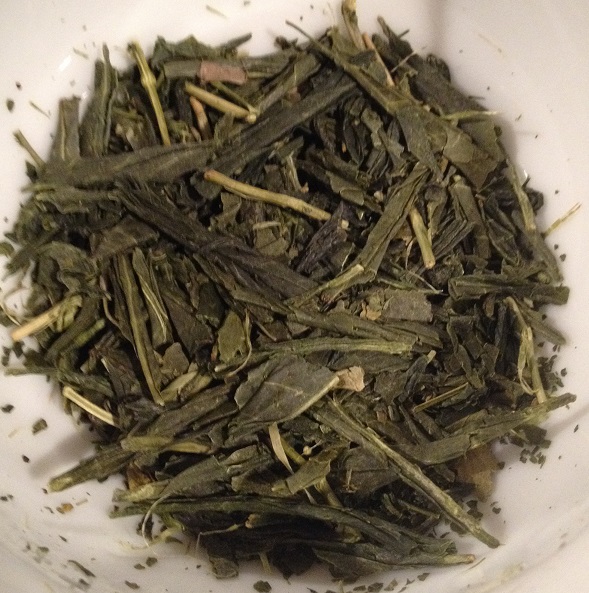
The dry leaves have a forest green to dark green color, with the twigs having a yellow color. The leaves are tightly rolled, and larger than most sencha teas, indicating the more mature leaves cut from the tea bushes for this particular style of tea. There are quite a few stems and twigs present. The leaves are all fragments, with no unbroken leaves, as is common with Japanese teas. The aroma has scents of dry grass, sweet hay, and wood (cedar chips).
Five grams of dry leaves were placed in an 8.5 ounce (240 ml) kyusu teapot. Filtered tap water was heated to 175°F (80°C). Leaves were infused for one minute on the first infusion, forty seconds on the second, and one minute on the third.
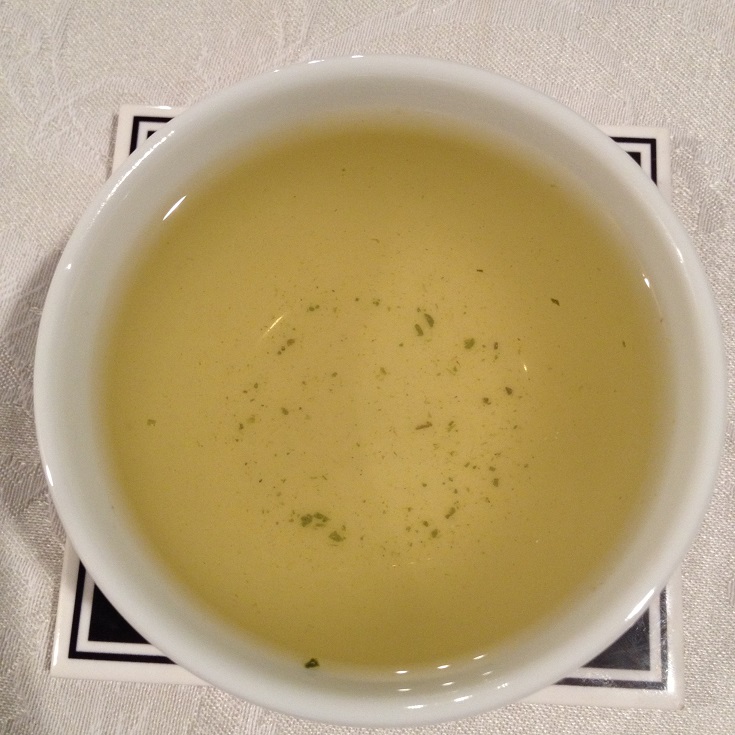
The first infusion produced a pale yellow color with a slight haze, but still transparent. The aroma had scents of hay, dry grass, wood, and slight marine hint. The body is medium, with a mildly savory (umami) mouth feel. The taste had notes of hay, dry grass, moderate astringency, and a slightly salty, marine seawater note. The aftertaste had notes of grass, with a mild flowery essence being left on the breath. To breath in through the mouth gives a salty feel in the mouth, like inhaling sea myst. This is not a bad characteristic, but certainly unusual. I tasted the filtered water by itself to make sure that my water was not strange, and it tasted normal to me. Also, I had nothing to eat or drink for two hours leading up to the tasting, so I have concluded that this salty taste is either authentic and chemistry related, or I am misreading the astringency level.
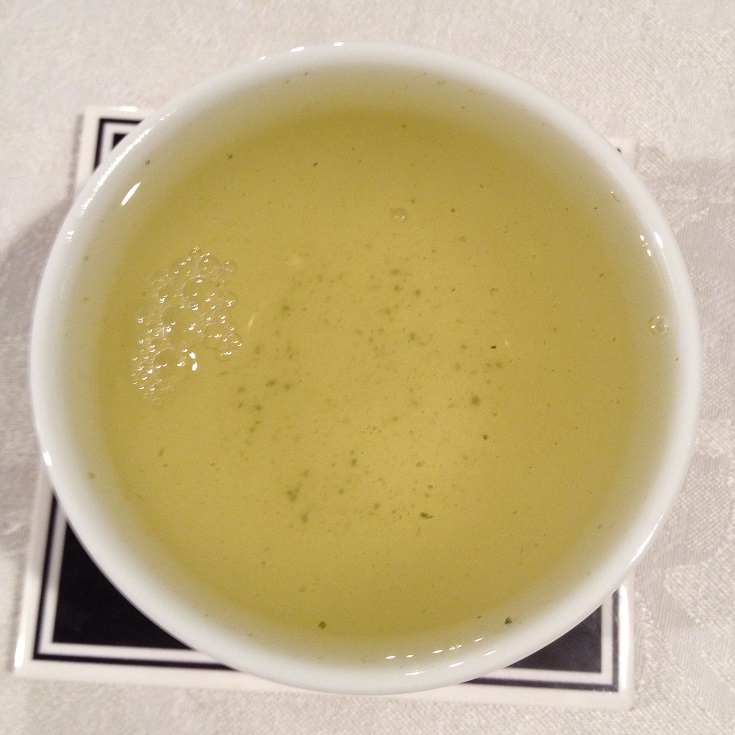
The second infusion produced a liquor with pale yellow color and a light jade tint. The aroma remains grassy, with scents of hay and sea myst. The body remains medium, and the savory (umamu) feel has lightened, but is still there. The taste also remains the same, with the astringency not lightening at all. The aftertaste is grassy with hints of sea myst. The salty sea myst feel remains in the mouth when inhaling.
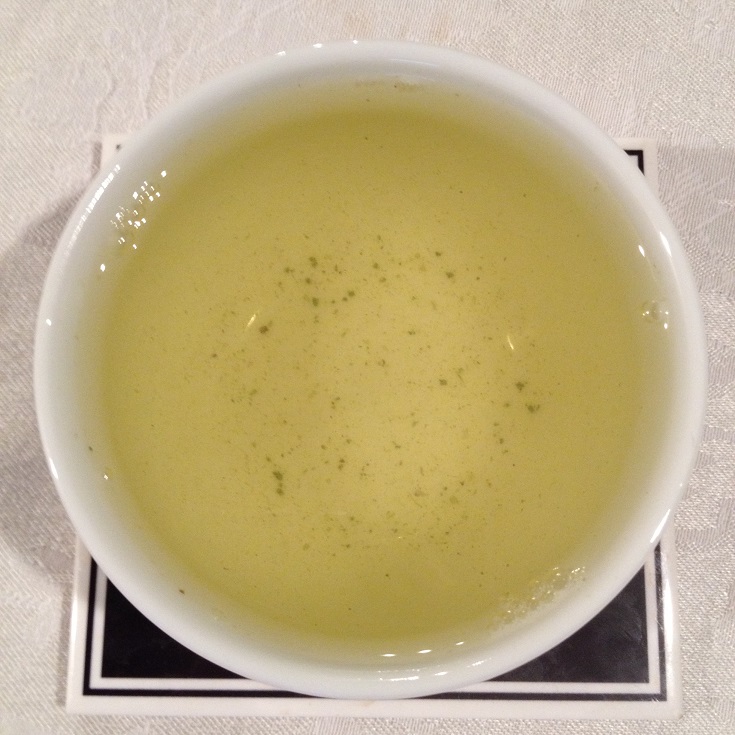
The third infusion produced a liquor with a nearly identical color to the second infusion. The aroma remains the same, perhaps slightly lighter. The body has lightened, and the savory (umami) character has lightened to the extent that it is nearly non-existent. The taste retains the same characteristics, with the astringency lightening considerably.
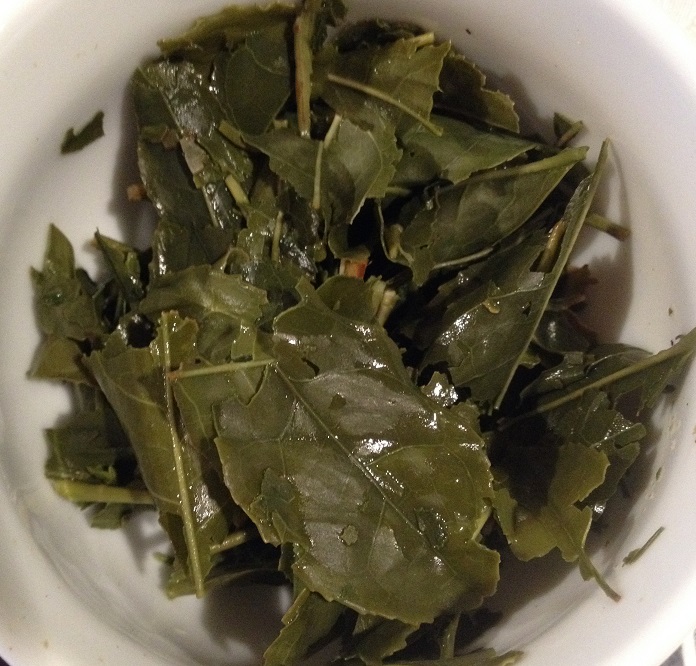
The infused leaves have a uniform fresh forest green color, with the stems and twigs having a greenish-yellow color. All leaves are fragments, but there are some that are quite large, as the photo above shows, again indicating more mature leaves. After four infusions, the leaves still have some durability with a slightly leathery feel. Although the fourth infusion was lighter than the first three, I believe a fifth infusion is possible. The aroma had the scent of cooked leafy green vegetables.
This Yanagi Bancha green tea from Kyoto Obubu Tea was quite different than any other tea that I have had in recent memory. Although I prefer a better grade of sencha over this bancha, it still has plenty of Japanese green tea character to offer. The marine, sea mist taste and feel were interesting, but again I recognize the possibility that I may have been misreading the astringency level or perhaps another taste altogether. Honestly, I probably would not have this tea in my personal collection, but if I came to a point where I wanted Japanese green tea and had a strict budget to follow, I would not hesitate to purchase this Yanagi Bancha.
Thank you for taking your time to read this review. Please leave a comment and start a discussion.
